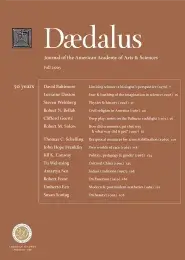Indian traditions & the Western imagination (1997)
This essay is concerned with Western images of Indian intellectual traditions and the interactions between those representations and a contemporary “internal” understanding of Indian culture.1 I focus particularly on the elementary diversities that characterize Indian society and its intellectual traditions, as well as on the biases that result from paying inadequate attention to them. In an obvious way, this applies to seeing India as a “mainly Hindu” country (as Western newspapers often describe India, as do the newly powerful Hindu political parties within India); this “mainly Hindu” country is also the third-largest Muslim country in the world (with nearly 110 million Muslims).
Less conspicuously, the contrast applies also to Indian intellectual traditions. This home of endless spirituality has perhaps the largest atheistic and materialist literature of all the ancient civilizations. To be sure, this accounting of the amount of unorthodox writing may be a little misleading, since Indian traditions are characterized by some prolixity. For example, the Sanskrit epic Mahabharata, which is often compared with the Iliad and the Odyssey, is in fact seven times as long as the Iliad and the Odyssey put together. One of the more striking Bengali verses I remember from my childhood is a lamentation about the tragedy of death in a nineteenth-century poem: “Just consider how terrible the day of your death will be. / Others will go on speaking, and you will not be able to respond.” But even this extreme fondness for speech is associated with an enormous heterogeneity of programs and preoccupations. Irreducible diversity is perhaps the most important feature of Indian intellectual traditions.
The self-images (or “internal identities”) of Indians have been extremely affected by colonialism over the past centuries and are much influenced–both collaterally and dialectically–by the impact of outside imagery (what we may call “external identity”). However, the direction of the influence of Western images on internal Indian identities is not altogether straightforward. In recent years, separatist resistance to Western cultural hegemony has led to the creation of significant intellectual movements in many postcolonial societies– not least in India. This has particularly drawn attention to the important fact that the self-identity of postcolonial societies is deeply affected by the power of the colonial cultures and their forms of thought and classification. Those who prefer to pursue a more “indigenous” approach often opt for a characterization of Indian culture and society that is rather self-consciously “distant” from Western traditions. There is much interest in “recovering” a distinctly Indian focus in Indian culture.
. . .
